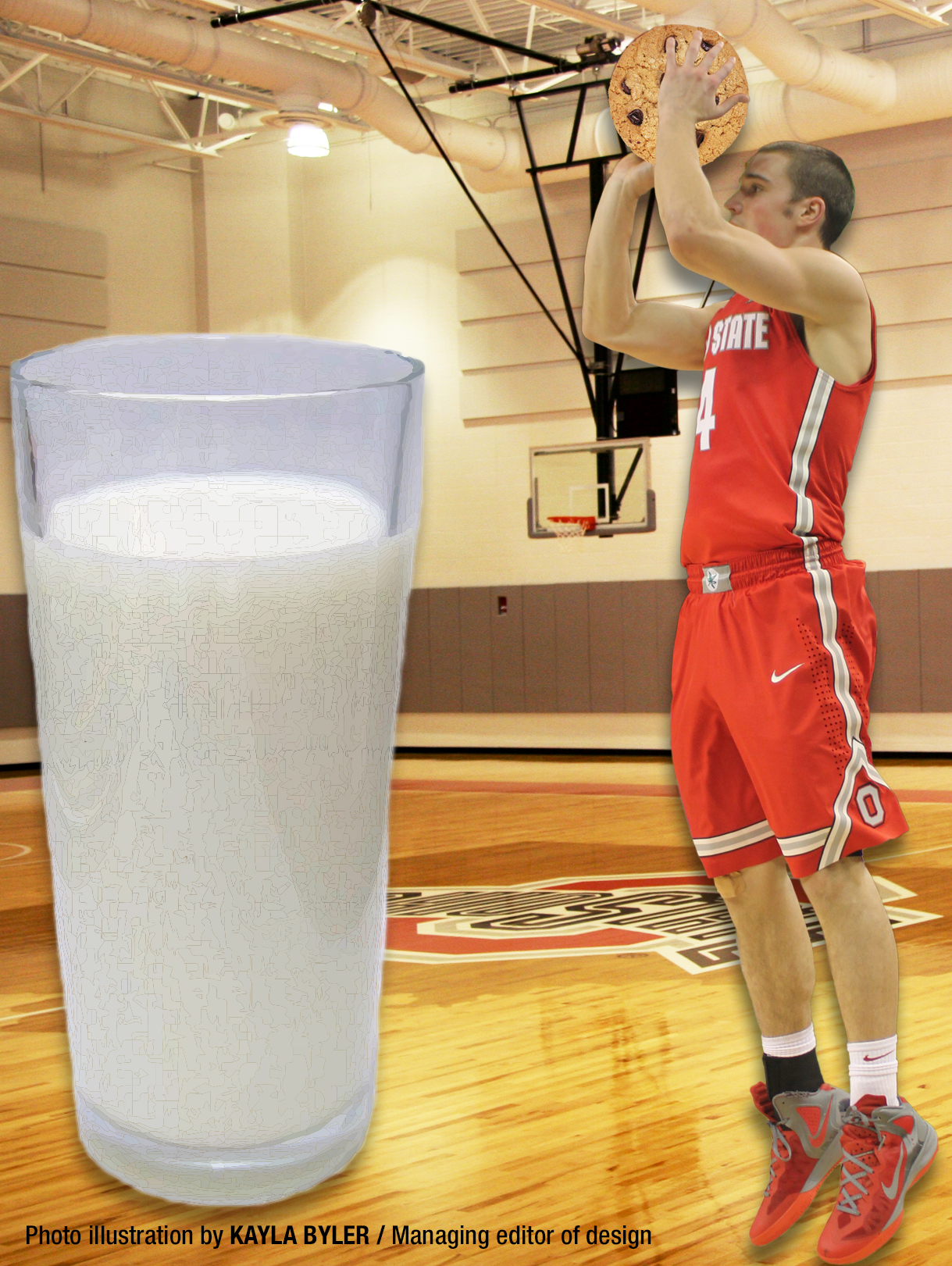
For many students, going to college equates to cutting back on calcium, but some Ohio State investigators want to change the pattern.
An OSU campaign to get students to consume more dairy products ended in September after “positively impacting calcium intake in students,” according to principal investigator Carolyn Gunther.
The campaign, “Calcium Keeps You Moo-ving,” aimed to inform students of the health benefits that come with consuming dairy products and lasted from the beginning of school year to early September. The campaign reached about 5,000 people a day, totalling approximately 80,000 people, according to project manager Jamie Seger.
Some OSU students were involved with the campaign as well.
“It was kind of cool. This campaign was different in the sense that it was a social media campaign,” said Brittney Batcho, a fourth-year in human development and family science, who assisted with the campaign.
The campaign recruited the help of some OSU athletes, including basketball player Aaron Craft, who was quoted in one promotional poster saying, “Chocolate milk is my favorite drink. I drink it for its recovery benefits after a workout and because it tastes phenomenal!”
The American Dairy Association contributed $50,000 for funding for research and collaborated on promotional materials, Gunther said.
Batcho, who is pursuing a minor in nutrition, said the campaign was primarily geared toward freshmen because when students come to campus, they don’t always have dairy products immediately at their disposal.
“When kids leave home, you see a precipitous drop in diet quality,” said Gunther, an assistant professor of human sciences.
The problem is access, said Gunther, who worked on a milk vending machine study for the past several years.
“They lose easy accessibility to milk and dairy products,” Gunther said.
For her study, milk vending machines were placed in buildings across campus such as Baker Hall, Drackett Tower and Taylor Tower. According to Gunther, the study showed students with easier access to milk and dairy products were more likely to consume them and thus consume more calcium.
“As far as I know, no other university across the country is doing this,” she said of the study.
Julie Kennel, the co-principal investigator for the campaign, said there are other problems with getting enough calcium in addition to accessibility.
“Eating and drinking can become more sporadic,” she said. “There are more potential options.”
Seger said people who don’t like milk or can’t drink it can still get their calcium from other foods. She suggested dark green vegetables such as broccoli, kale and collard greens, or foods like beans and almonds that provide calcium as well.
Gunther said those who worked on the campaign plan to send out an electronic survey to all OSU Columbus campus undergraduates to gauge awareness of the campaign and “potential perceived impact on awareness of calcium needs and impact on diet behavior.”


